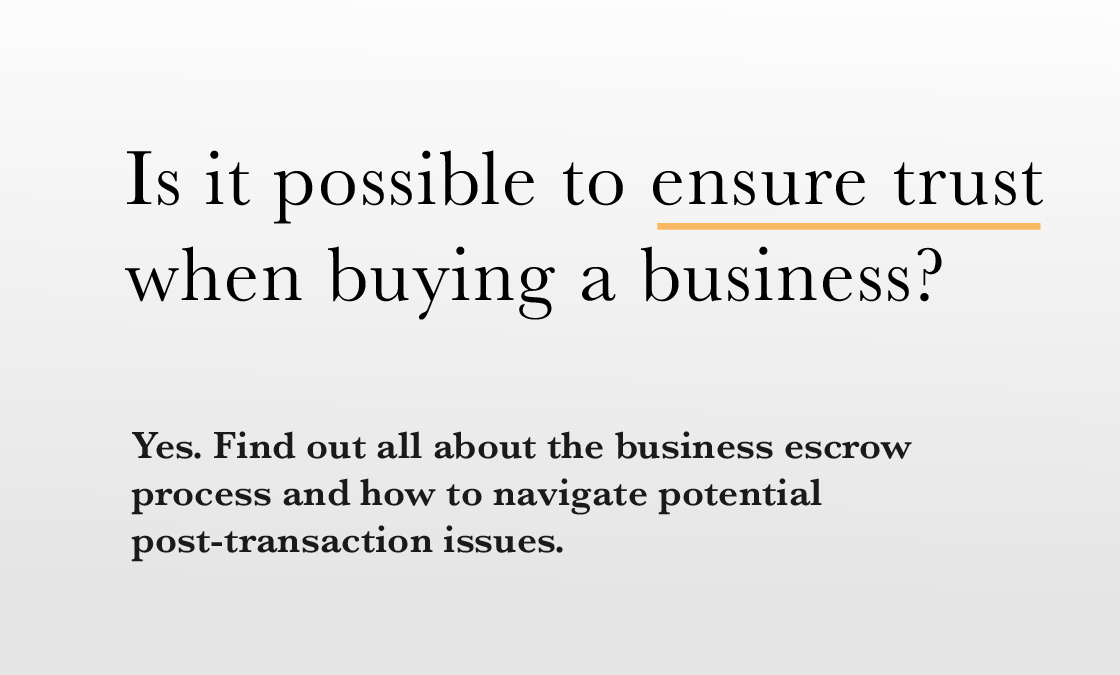You know that deal. The sale or purchase of a business looks promising in many ways, but it just won’t close, so it lurches along in the twilight, neither alive nor fully dead. Often the sticking point is that one party (usually the seller) just isn’t happy with the escrow or the amount of the indemnity, or perhaps the seller is retiring and just looking for more certainty about the availability of sale proceeds than either of those arrangements may produce.
It could actually be the buyer who is wants an edge in a competitive market, is dealing with a financially distressed or non-U.S. seller, or is just afraid that inaccurate or incomplete disclosure has inflated the price.
Representations and warranties insurance can be used to protect either the buyer or seller from these risks. It is not a new product. It just used to be prohibitively expensive in the U.S. Now that the price is coming down, however, some are declaring it the hottest new thing in insurance since data breach liability insurance. It is not always the right thing to do, though. Some zombies really should be dead.
What is Reps and Warranties Insurance?
In the sale or purchase of a business, one critical element is how the risk of unknown factors is allocated between the buyer and the seller. The first line of defense for either party is thorough due diligence. The buyer should thoroughly investigate the business and the seller should investigate the buyer’s ability to pay.
Step two involves carefully drafted statements on the part of both parties (representations and warranties) in the contract of sale. Breach of any of these will give the wronged party a right to sue, which, sadly, by itself may not be worth anything if the wrongdoer is insolvent or has left the jurisdiction.
Step three involves holding part of the purchase price in escrow until the buyer is satisfied in whatever way the contract defines. This actually gives the buyer a remedy beyond an empty lawsuit.
Step four is another remedy for breach — an indemnity agreement in which the seller agrees to pay the buyer’s legal costs and other damages in the event of breach.
Step five is insurance or more specifically, reps and warranties insurance. RWI protects against breaches of contractual representations and warranties that the seller makes in transaction documents. It can be written to cover all or some of the seller’s contractual representations and warranties. Most importantly, it assigns the risk of breach to a third party – the insurance company.
When there’s lots of money involved or, more likely in a deal involving a small to middle-sized enterprise, when the parties cannot afford to throw money around like water, there are lots of reasons to go to step five.
RWI has been around since the 1990s, but the cost has dropped recently and its use has increased accordingly. RWI policies with aggregate limits of $10 billion were issued in 2012; $15 billion in 2013; and estimates for 2014 are as high as $40 billion.
How to Use RWI
In order to use RWI well and to justify the cost, both parties need to examine carefully what they want it to do. To do this, it is important to address 5 key questions:
- Will the insurance function as security, like the escrow amount, or will it function as an indemnity?
- Who should be insured? The policy may be designed as buyer-side or seller-side insurance, and each functions somewhat differently.
- How broad is the coverage? Exactly what breaches does it cover? More relevant, what breaches does it not cover?
- What risks do the buyer and seller retain, and up to what limits?
- What else is excluded from coverage?
Advantages to the Seller
For sellers, RWI has a number of advantages. It can eliminate or reduce the need to escrow sale proceeds after the closing. It may help the seller negotiate a lower cap on the indemnity, so that he or she can be more certain to keep the sale proceeds after the closing. As a practical matter, this certainty may be important if the seller intends to retire, wants to re-invest the proceeds in another venture or has other reasons to want an extra measure of security. Special issues can also arise with private equity funds or where a selling shareholder is an ESOP or a trust.
The seller may be able to negotiate an arrangement in which the buyer purchases the RWI policy, which is then the sole recourse for breaches. More often, the seller will remain responsible for some portion of the indemnity, but will be able to negotiate a lower cap that is supplemented by the insurance. Sometimes the premium is paid jointly by the buyer and seller because each benefits from it. The buyer is the beneficiary and the seller is able to lower the indemnity cap.
Seller-based policies function much like other liability policies. If the buyer makes an indemnification claim against the seller under the purchase and sale agreement, the seller submits the claim to the insurer but remains obligated under the policy to defend the claim.
Advantages to the Buyer
RWI can offer buyers a practical way to get a strategically important deal “unstuck” and closed in a timely fashion. In a competitive situation, where other potential buyers are offering a higher price, an offer that includes RWI may clinch the deal. It can also mitigate the buyer’s post- closing risks in a number of ways, as when dealing with a financially-distressed seller or in a cross-border deal, where understandings of contractual provisions may differ or access to court systems is doubtful.
Buyer-based RWI assumes that claims will involve a first party loss. The claim mechanism is a proof of loss form. If the buyer discovers a breach of representations and warranties after closing, the buyer would bypass the seller and make a claim directly to the insurer. Many buyers would prefer to deal directly with the insurer, and most sellers seek to limit post-closing entanglements as much as possible.
Why Not RWI?
It seems hard to make the argument against a relatively inexpensive addition to a purchase and sale agreement that adds so much additional security.
Nonetheless, there is no substitute for thorough due diligence. Some fear that the availability of RWI will lead buyers and sellers to abandon reasonable caution and close deals that should not happen. A bad purchase can live on as yet another sort of zombie, with or without insurance.
Secondly, buyers and sellers should be sure that they understand exactly what is and is not covered by the policy. Many are limited in both the amount that is covered and the specific breaches that are covered. Some risks typically remain with the buyer or seller.
Finally, although the risk that the insurance company will not pay is low, it is not zero. Andrew Ross Sorkin, writing for the New York Times’ Dealbook, has worried that the proliferation of RWI policies in mergers and acquisitions may be the hidden threat that ignites the next financial crisis. As he writes,
My candidate for the most unperceived threat is the rapidly escalating use in mergers and acquisitions of insurance that offers both buyers and sellers protection against unexpected or hidden liabilities after deals close… It has created a gold mine of premiums for insurers and given deal makers the ability to get deals done more quickly with less to worry about something going awry after closing because that liability rests with the insurance company. Or so the theory goes; getting insurance companies to pay up has always been a challenge.
As another factor driving the rush to RWI, he cites the increasing fear of bankers, lawyers and boards that they may be held legally accountable for bad decisions or advice. It is a theme eerily familiar from the last great financial crisis.
Even if the threat of global catastrophe seems overblown, all three notes of caution sound the same basic theme: RWI should clearly not be used to close a fundamentally bad deal. The fifth level of security that it can bring is an addition to, not substitute for, the first four steps.
Reps and warranties insurance is a tool that may be helpful to buyers and sellers trying to close a sale that seems to have gotten stuck on the details of post-closing security. If the deal is otherwise viable and makes sense in terms of price and strategy, RWI may be the difference that can get it done. As with any other negotiating tool, however, it does not alter the fundamentals of the deal. Buyers and sellers should be satisfied that those are sound independently of the potential for insurance.


![Wrap Up | Behind the Buy [8/8] [309]](https://www.pashalaw.com/wp-content/uploads/2020/11/Pasha_BehindTheBuy_Episode8-1024x683.jpg)
![Is it all over? | Behind the Buy [7/8] [308]](https://www.pashalaw.com/wp-content/uploads/2020/09/iStock-1153248856-overlay-scaled-1024x683.jpg)
![Fight for Your [Trademark] Rights | Behind the Buy [6/8] [307]](https://www.pashalaw.com/wp-content/uploads/2020/07/Fight-for-your-trademark-right-1024x683.jpg)

![They Let It Slip | Behind the Buy [5/8] [306]](https://www.pashalaw.com/wp-content/uploads/2020/06/Behind-the-buy-they-let-it-slip-1024x683.jpg)
![Mo’ Investigation Mo’ Problems | Behind the Buy [4/8] [305]](https://www.pashalaw.com/wp-content/uploads/2020/05/interrobang-1-scaled-1024x683.jpg)




![Law in the Digital Age: Exploring the Legal Intricacies of Artificial Intelligence [e323]](https://www.pashalaw.com/wp-content/uploads/2023/11/WhatsApp-Image-2023-11-21-at-13.24.49_4a326c9e-300x212.jpg)
![Unraveling the Workforce: Navigating the Aftermath of Mass Layoffs [e322]](https://www.pashalaw.com/wp-content/uploads/2023/07/Untitled-design-23-300x212.png)
![Return to the Office vs. Remote: What Can Employers Legally Enforce? [e321]](https://www.pashalaw.com/wp-content/uploads/2023/01/Pasha_LSSB_321_banner-300x212.jpg)
![Explaining the Hans Niemann Chess Lawsuit v. Magnus Carlsen [e320]](https://www.pashalaw.com/wp-content/uploads/2022/10/LAWYER-EXPLAINS-7-300x169.png)
![California v. Texas: Which is Better for Business? [313]](https://www.pashalaw.com/wp-content/uploads/2021/07/Pasha_LSSB_CaliforniaVSTexas-300x212.jpg)
![Buyers vs. Sellers: Negotiating Mergers & Acquisitions [e319]](https://www.pashalaw.com/wp-content/uploads/2022/06/Pasha_LSSB_BuyersVsSellers_banner-300x212.jpg)
![Employers vs. Employees: When Are Employment Restrictions Fair? [e318]](https://www.pashalaw.com/wp-content/uploads/2022/05/Pasha_LSSB_EmployeesVsEmployers_banner-1-300x212.jpg)
![Vaccine Mandates Supreme Court Rulings [E317]](https://www.pashalaw.com/wp-content/uploads/2022/02/WhatsApp-Image-2022-02-11-at-4.10.32-PM-300x212.jpeg)
![Business of Healthcare [e316]](https://www.pashalaw.com/wp-content/uploads/2021/11/Pasha_LSSB_BusinessofHealthcare_banner-300x212.jpg)
![Social Media and the Law [e315]](https://www.pashalaw.com/wp-content/uploads/2021/10/WhatsApp-Image-2021-10-06-at-1.43.08-PM-300x212.jpeg)
![Defining NDA Boundaries: When does it go too far? [e314]](https://www.pashalaw.com/wp-content/uploads/2021/09/Pasha_LSSB_NDA_WordPress-2-300x212.jpg)
![More Than a Mistake: Business Blunders to Avoid [312] Top Five Business Blunders](https://www.pashalaw.com/wp-content/uploads/2021/06/Pasha_LSSB_Blunders_WP-1-300x212.jpg)
![Is There a Right Way to Fire an Employee? We Ask the Experts [311]](https://www.pashalaw.com/wp-content/uploads/2021/02/Pasha_LSSB_FireAnEmployee_Website-300x200.jpg)
![The New Frontier: Navigating Business Law During a Pandemic [310]](https://www.pashalaw.com/wp-content/uploads/2020/12/Pasha_LSSB_Epidsode308_Covid_Web-1-300x200.jpg)
![Wrap Up | Behind the Buy [8/8] [309]](https://www.pashalaw.com/wp-content/uploads/2020/11/Pasha_BehindTheBuy_Episode8-300x200.jpg)
![Is it all over? | Behind the Buy [7/8] [308]](https://www.pashalaw.com/wp-content/uploads/2020/09/iStock-1153248856-overlay-scaled-300x200.jpg)
![Fight for Your [Trademark] Rights | Behind the Buy [6/8] [307]](https://www.pashalaw.com/wp-content/uploads/2020/07/Fight-for-your-trademark-right-300x200.jpg)
![They Let It Slip | Behind the Buy [5/8] [306]](https://www.pashalaw.com/wp-content/uploads/2020/06/Behind-the-buy-they-let-it-slip-300x200.jpg)
![Mo’ Investigation Mo’ Problems | Behind the Buy [4/8] [305]](https://www.pashalaw.com/wp-content/uploads/2020/05/interrobang-1-scaled-300x200.jpg)
![Broker or Joker | Behind the Buy [3/8] [304] Behind the buy - Broker or Joker](https://www.pashalaw.com/wp-content/uploads/2020/04/Joker-or-Broker-1-300x185.jpg)
![Intentions Are Nothing Without a Signature | Behind the Buy [2/8] [303]](https://www.pashalaw.com/wp-content/uploads/2020/04/intentions-are-nothing-without-a-signature-300x185.jpg)
![From First Steps to Final Signatures | Behind the Buy [1/8] [302]](https://www.pashalaw.com/wp-content/uploads/2020/04/first-steps-to-final-signatures-300x185.jpg)
![The Dark-side of GrubHub’s (and others’) Relationship with Restaurants [e301]](https://www.pashalaw.com/wp-content/uploads/2015/04/When-Competition-Goes-Too-Far-Ice-Cream-Truck-Edition-300x201.jpg)
![Ultimate Legal Breakdown of Internet Law & the Subscription Business Model [e300]](https://www.pashalaw.com/wp-content/uploads/2019/05/Ultimate-Legal-Breakdown-of-Internet-Law-the-Subscription-Business-Model-300x196.jpg)
![Why the Business Buying Process is Like a Wedding?: A Legal Guide [e299]](https://www.pashalaw.com/wp-content/uploads/2019/03/futura-300x169.jpg)
![Will Crowdfunding and General Solicitation Change How Companies Raise Capital? [e298]](https://www.pashalaw.com/wp-content/uploads/2018/11/Will-Crowdfunding-and-General-Solicitation-Change-How-Companies-Raise-Capital-300x159.jpg)
![Pirates, Pilots, and Passwords: Flight Sim Labs Navigates Legal Issues (w/ Marc Hoag as Guest) [e297]](https://www.pashalaw.com/wp-content/uploads/2018/07/flight-sim-labs-300x159.jpg)
![Facebook, Zuckerberg, and the Data Privacy Dilemma [e296] User data, data breach photo by Pete Souza)](https://www.pashalaw.com/wp-content/uploads/2018/04/data-300x159.jpg)
![What To Do When Your Business Is Raided By ICE [e295] I.C.E Raids business](https://www.pashalaw.com/wp-content/uploads/2018/02/ice-cover-300x159.jpg)
![General Contractors & Subcontractors in California – What you need to know [e294]](https://www.pashalaw.com/wp-content/uploads/2018/01/iStock-666960952-300x200.jpg)
![Mattress Giants v. Sleepoplis: The War On Getting You To Bed [e293]](https://www.pashalaw.com/wp-content/uploads/2017/12/sleepopolis-300x159.jpg)
![The Harassment Watershed [e292]](https://www.pashalaw.com/wp-content/uploads/2017/12/me-2-300x219.jpg)
![Investing and Immigrating to the United States: The EB-5 Green Card [e291]](https://www.pashalaw.com/wp-content/uploads/2012/12/eb-5-investment-visa-program-300x159.jpg)
![Responding to a Government Requests (Inquiries, Warrants, etc.) [e290] How to respond to government requests, inquiries, warrants and investigation](https://www.pashalaw.com/wp-content/uploads/2017/10/iStock_57303576_LARGE-300x200.jpg)
![Ultimate Legal Breakdown: Employee Dress Codes [e289]](https://www.pashalaw.com/wp-content/uploads/2017/08/Ultimate-Legal-Breakdown-Template-1-300x159.jpg)
![Ultimate Legal Breakdown: Negative Online Reviews [e288]](https://www.pashalaw.com/wp-content/uploads/2017/06/Ultimate-Legal-Breakdown-Online-Reviews-1-300x159.jpg)
![Ultimate Legal Breakdown: Social Media Marketing [e287]](https://www.pashalaw.com/wp-content/uploads/2017/06/ultimate-legal-breakdown-social-media-marketing-blur-300x159.jpg)
![Ultimate Legal Breakdown: Subscription Box Businesses [e286]](https://www.pashalaw.com/wp-content/uploads/2017/03/ultimate-legal-breakdown-subscription-box-services-pasha-law-2-300x159.jpg)
![Can Companies Protect Against Foreseeable Misuse of Apps [e285]](https://www.pashalaw.com/wp-content/uploads/2017/01/iStock-505291242-300x176.jpg)
![When Using Celebrity Deaths for Brand Promotion Crosses the Line [e284]](https://www.pashalaw.com/wp-content/uploads/2017/01/celbrity-300x159.png)
![Are Employers Liable When Employees Are Accused of Racism? [e283] Racist Employee](https://www.pashalaw.com/wp-content/uploads/2016/12/Are-employers-liable-when-an-employees-are-accused-of-racism-300x159.jpg)
![How Businesses Should Handle Unpaid Bills from Clients [e282] What to do when a client won't pay.](https://www.pashalaw.com/wp-content/uploads/2016/12/How-Businesses-Should-Handle-Unpaid-Bills-to-Clients-300x159.png)
![Can Employers Implement English Only Policies Without Discriminating? [e281]](https://www.pashalaw.com/wp-content/uploads/2016/11/Can-Employers-Impliment-English-Only-Policies-Without-Discriminating-300x159.jpg)
![Why You May No Longer See Actors’ Ages on Their IMDB Page [e280]](https://www.pashalaw.com/wp-content/uploads/2016/10/IMDB-AGE2-300x159.jpg)
![Airbnb’s Discrimination Problem and How Businesses Can Relate [e279]](https://www.pashalaw.com/wp-content/uploads/2016/09/airbnb-300x159.jpg)
![What To Do When Your Amazon Account Gets Suspended [e278]](https://www.pashalaw.com/wp-content/uploads/2016/09/What-To-Do-When-Your-Amazon-Account-Gets-Suspended-1-300x200.jpg)
![How Independent Artists Reacted to Fashion Mogul Zara’s Alleged Infringement [e277]](https://www.pashalaw.com/wp-content/uploads/2016/08/How-Independent-Artists-Reacted-to-Fashion-Mogul-Zaras-Alleged-Infringement--300x159.jpg)
![Can Brave’s Ad Replacing Software Defeat Newspapers and Copyright Law? [e276]](https://www.pashalaw.com/wp-content/uploads/2016/08/Can-Braves-Ad-Replacing-Software-Defeat-Newspapers-and-Copyright-Law-300x159.jpg)
![Why The Roger Ailes Sexual Harassment Lawsuit Is Far From Normal [e275]](https://www.pashalaw.com/wp-content/uploads/2016/07/WHY-THE-ROGER-AILES-SEXUAL-HARASSMENT-LAWSUIT-IS-FAR-FROM-NORMAL-300x159.jpeg)
![How Starbucks Turned Coveted Employer to Employee Complaints [e274]](https://www.pashalaw.com/wp-content/uploads/2016/07/iStock_54169990_LARGE-300x210.jpg)
